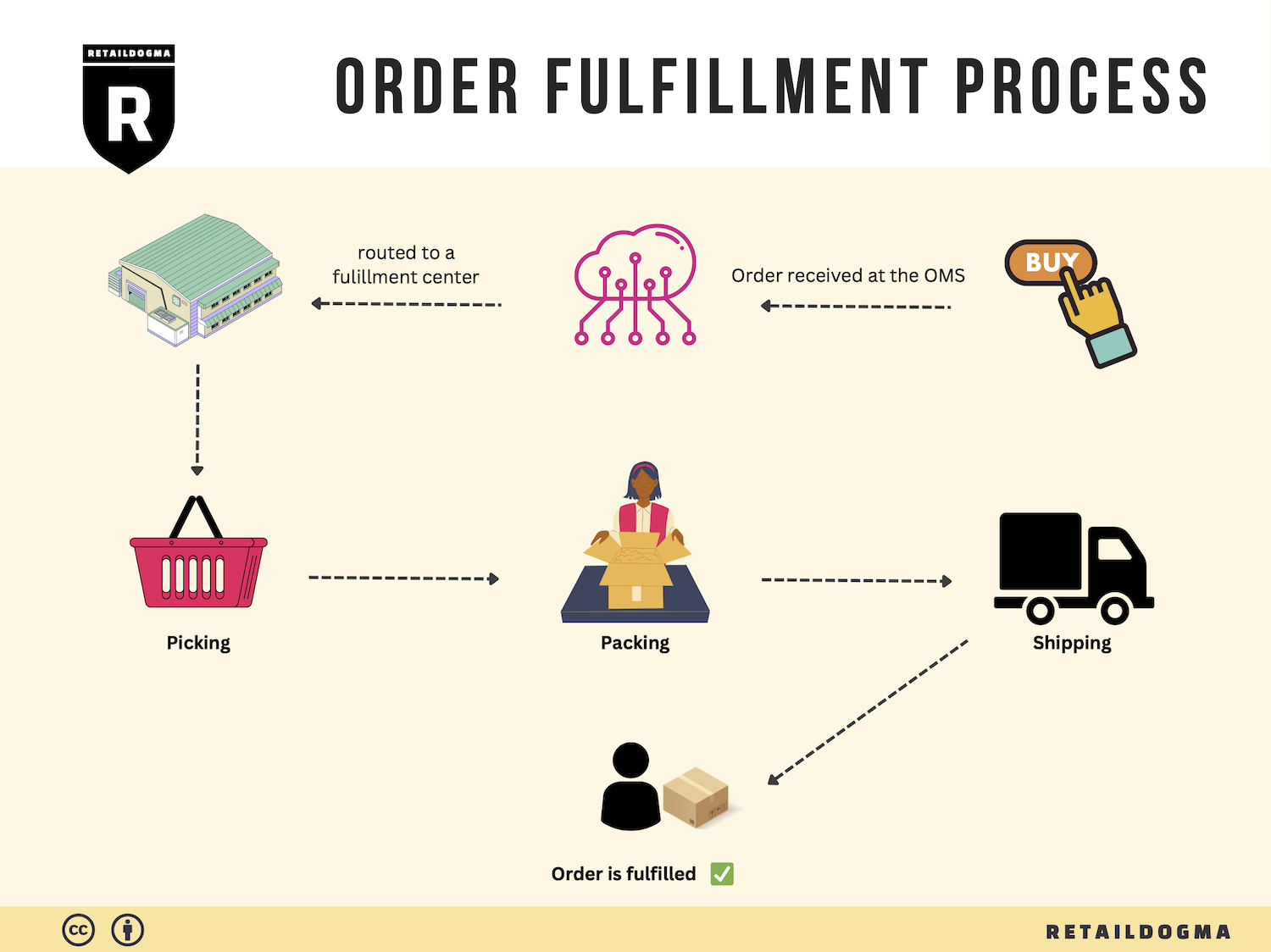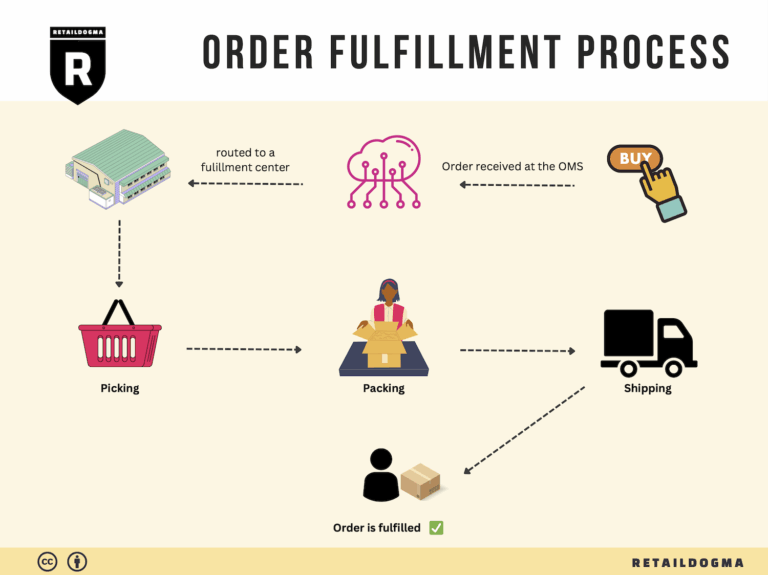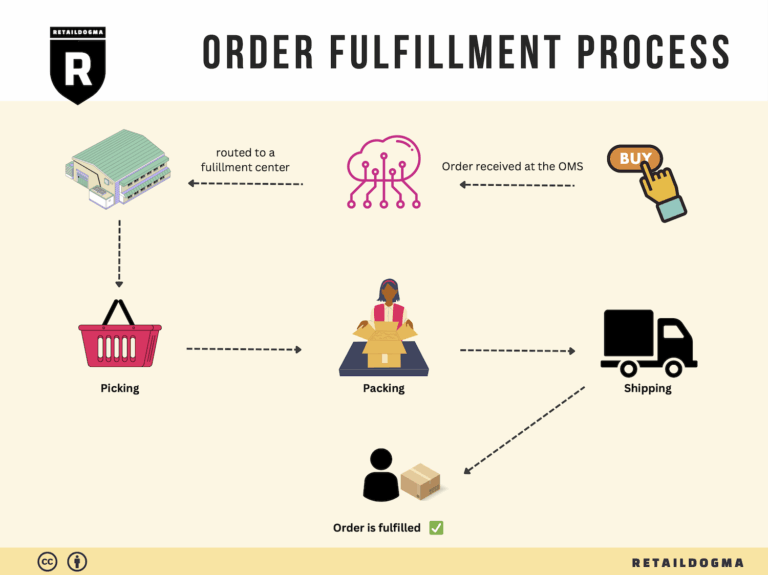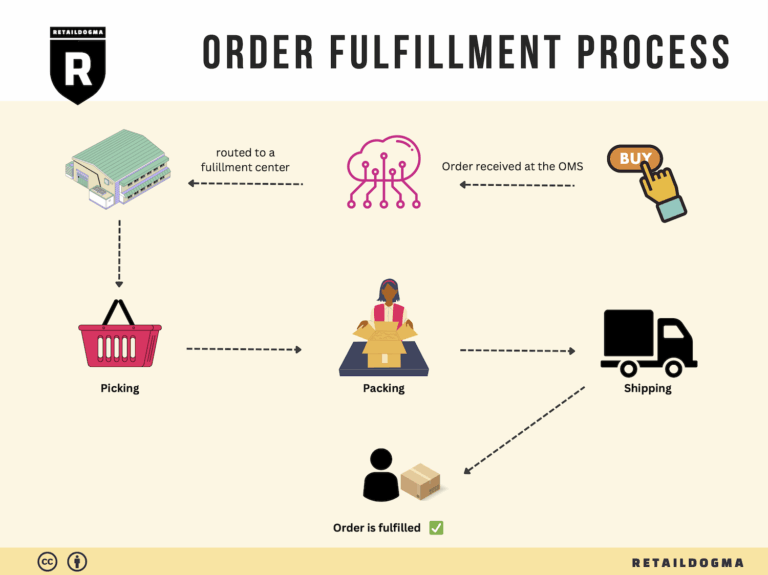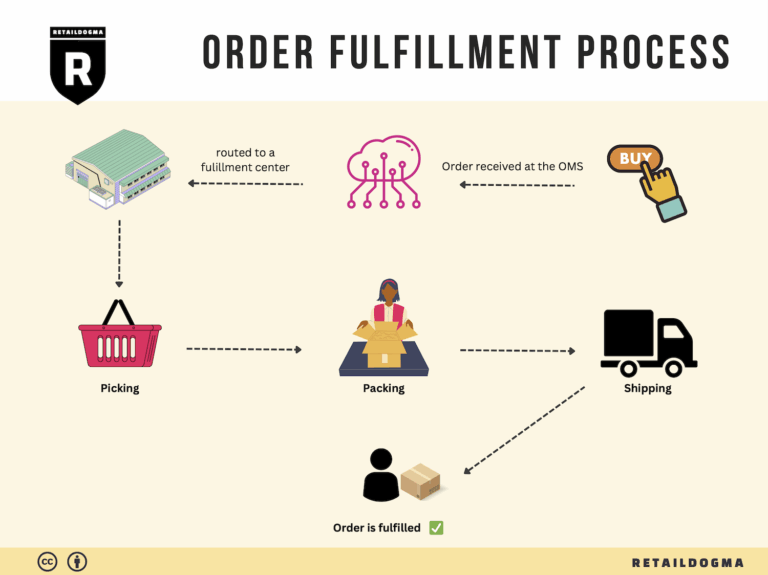Ecommerce Fulfillment Services: The Ultimate Guide (2025)
What is E-commerce Fulfillment? An Introduction for Growing Businesses
Understanding the Challenge of E-commerce Fulfillment
For many growing online businesses, the excitement of scaling sales can quickly turn into a daunting challenge when it comes to order fulfillment. As orders increase, the logistics of packing and shipping can become overwhelming, leading to potential delays, errors, and unsatisfied customers. This is where effective e-commerce fulfillment becomes essential. Simply put, fulfillment is the process of getting a product from your inventory into the hands of your customers. It encompasses everything from inventory management and order processing to packing, shipping, and handling returns.
What This Guide Covers
Navigating the complexities of e-commerce fulfillment can be a game-changer for your business. In this guide, we will explore several key areas to help you streamline your logistics operations:
-
Fulfillment Models: We will dive into various fulfillment models, such as Third-Party Logistics (3PL) and Fulfillment by Amazon (FBA), each offering unique advantages depending on your business needs.
-
Core Fulfillment Services: Understanding the essential services involved in fulfillment—like inventory management, order picking and packing, shipping logistics, and returns processing—is crucial for making informed decisions.
-
Choosing a Fulfillment Partner: Selecting the right fulfillment partner can significantly impact your operations. We will provide insights on evaluating potential partners based on their capabilities, technology, network reach, and customer service.
-
Pricing Structures: We will break down common pricing models in fulfillment services, helping you understand how costs are determined and what to expect as your order volume grows.
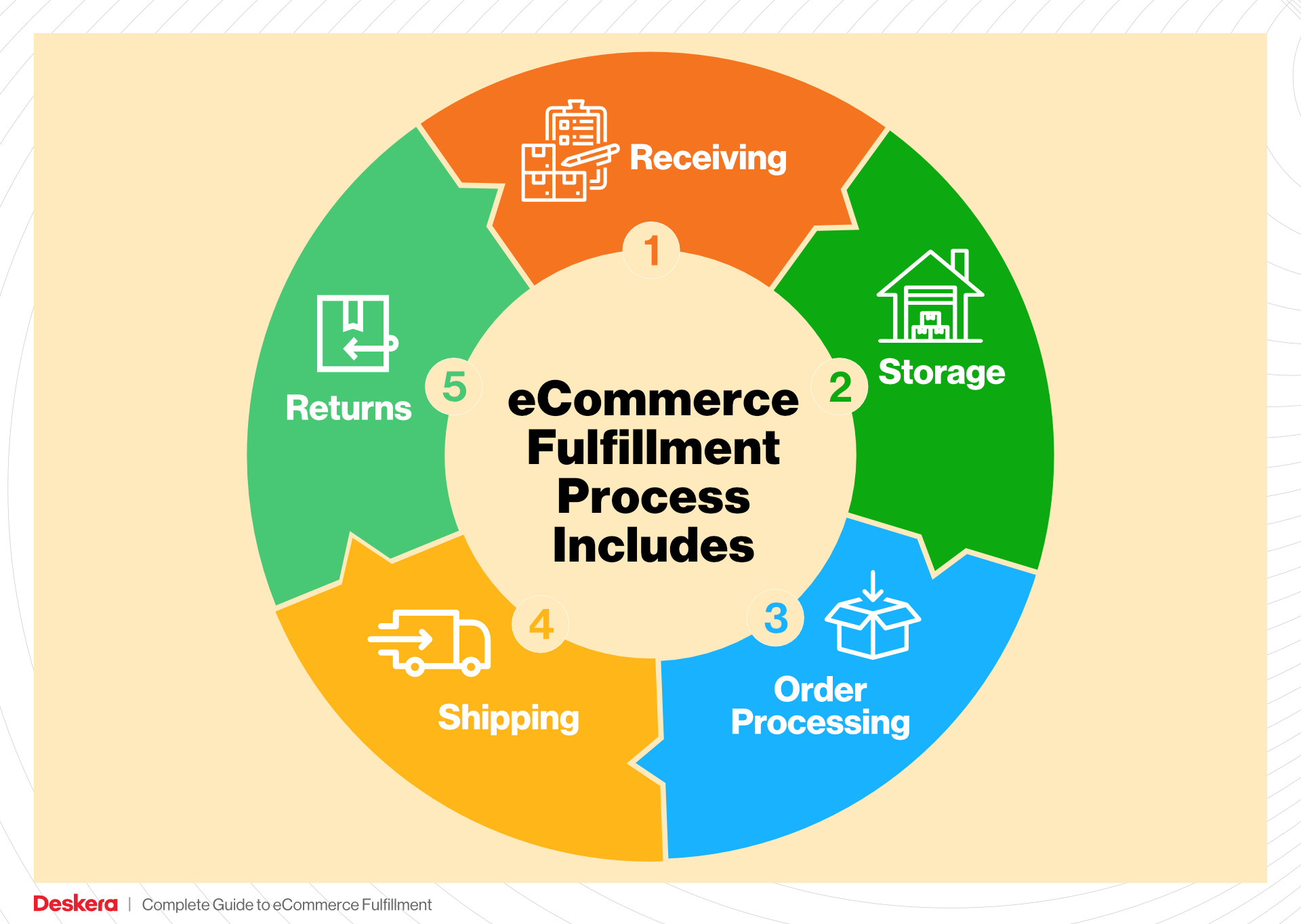
Empowering Smart Decisions
The ultimate goal of this guide is to empower you as a business owner or operations manager to make informed decisions about your logistics strategy. By understanding the nuances of e-commerce fulfillment, you can optimize your operations, enhance customer satisfaction, and scale your business more effectively. Whether you’re just starting or looking to refine your existing fulfillment processes, the insights provided here will serve as a valuable resource for navigating the path to successful e-commerce logistics.
What You’ll Learn In This Guide
- What is E-commerce Fulfillment? An Introduction for Growing Businesses
- The Order Fulfillment Process: From ‘Buy’ Button to Customer’s Door
- Comparing Fulfillment Models: In-House vs. 3PL vs. Dropshipping
- A Deep Dive into Amazon FBA: Pros, Cons, and Who It’s For
- Core Services Offered by Fulfillment Centers
- How to Choose a Fulfillment Partner: A 6-Point Checklist
- Understanding Fulfillment Pricing: A Breakdown of Common Fees
- Frequently Asked Questions (FAQs) about Fulfillment
- Conclusion: Is Outsourcing Fulfillment the Right Move for Your Business?
- Important Disclaimer
The Order Fulfillment Process: From ‘Buy’ Button to Customer’s Door
1. Receiving Inventory
The order fulfillment process begins with receiving inventory. When products are delivered to your warehouse or fulfillment center, they must be carefully inspected and logged into your inventory management system. This step is crucial as it ensures that the correct quantities and types of products are received, minimizing discrepancies that could affect future orders.
Importance: Proper receiving procedures help avoid stockouts and overstock situations, allowing for smoother operations. Accurate inventory records also play a vital role in financial reporting and inventory valuation.
Key Term: SKU (Stock Keeping Unit) – Each product should have a unique SKU for easy identification and tracking throughout the fulfillment process.
2. Warehouse Storage
Once the inventory is received, it is stored in the warehouse. Effective storage solutions are essential for maximizing space and ensuring easy access to products. This may involve strategic shelving, pallet racking, or even automated storage systems, depending on the scale of operations.
Importance: Efficient warehouse storage minimizes retrieval times and optimizes the overall workflow. It also helps in maintaining an organized inventory system, which is critical for scaling operations as order volumes increase.
Key Term: Location Code – Each storage area should have a designated location code that corresponds to the items stored there, facilitating quicker order picking later in the process.
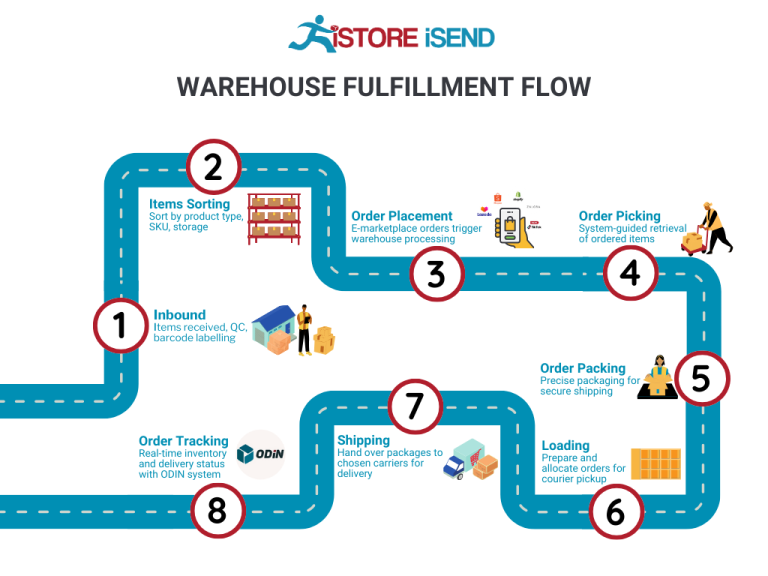
3. Order Picking
Order picking is the process of selecting items from the warehouse to fulfill customer orders. This step can be executed using various methods, such as single order picking, batch picking, or wave picking. The choice of method often depends on the volume of orders and the complexity of the inventory.
Importance: The efficiency of the picking process directly impacts order fulfillment speed and accuracy. Faster picking reduces the overall lead time, enhancing customer satisfaction and loyalty.
Key Term: Pick List – A document or digital report that outlines the items and quantities needed for each order, guiding warehouse staff through the picking process.
4. Order Packing
After items are picked, they are packed for shipment. This step involves selecting appropriate packaging materials, ensuring items are secure for transport, and labeling packages accurately. Attention to detail during packing is critical to prevent damage during transit.
Importance: Proper packing not only protects products but also enhances the unboxing experience for customers. Additionally, accurate labeling ensures that packages are routed correctly, reducing the risk of delivery errors.
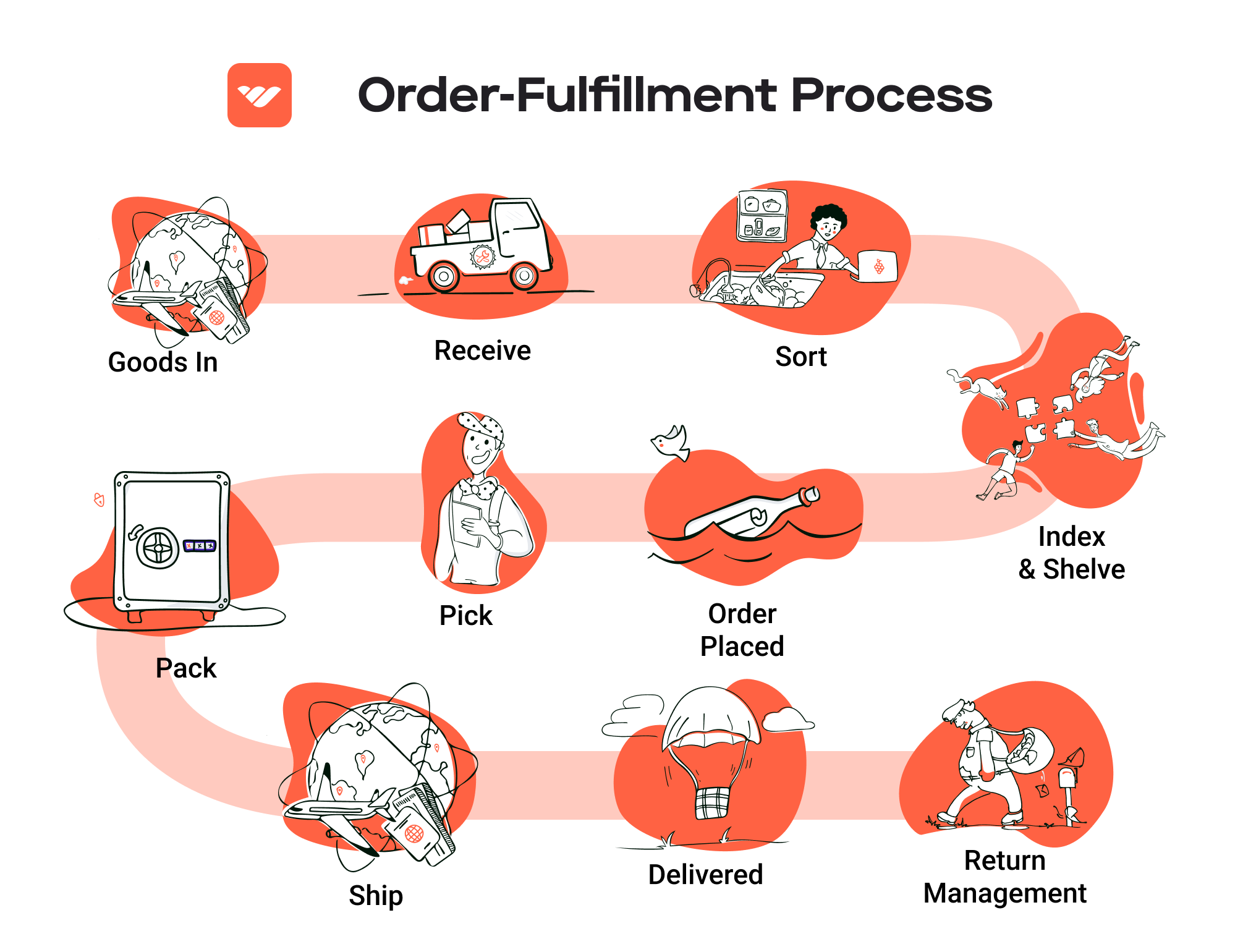
Key Term: Packing Slip – A document included with the shipment that lists the items in the package, serving as a reference for both the sender and the recipient.
5. Shipping & Delivery
The final step in the order fulfillment process is shipping and delivery. Once packages are packed, they are handed over to shipping carriers. Timely and reliable shipping is essential for maintaining customer trust and satisfaction.
Importance: The shipping method selected can impact delivery speed and cost. Utilizing a multi-carrier strategy can help businesses optimize shipping options based on factors like destination, weight, and urgency.
Key Term: Tracking Number – A unique identifier assigned to a shipment that allows both the sender and customer to monitor the package’s journey until it arrives at the customer’s door.
By mastering these five steps, e-commerce businesses can streamline their order fulfillment processes, leading to improved operational efficiency and enhanced customer experiences. Each step is interconnected, and optimizing one can significantly influence the others, ultimately contributing to a successful fulfillment strategy.
Comparing Fulfillment Models: In-House vs. 3PL vs. Dropshipping
Fulfillment Models Comparison Table
| Model | Who Handles Inventory | Best For (Business Stage) | Key Advantage | Key Disadvantage |
|---|---|---|---|---|
| In-House Fulfillment | The business itself | Startups to established | Complete control over inventory and processes | High overhead costs and resource demands |
| Third-Party Logistics (3PL) | A third-party logistics provider | Scaling businesses | Reduced operational burden and scalability | Less control over inventory and processes |
| Dropshipping | Suppliers | Startups and small businesses | Low upfront investment and risk | Lower profit margins and reliance on suppliers |
In-House Fulfillment
In-house fulfillment refers to managing the entire supply chain process internally. This includes receiving inventory, warehousing, picking, packing, and shipping products directly to customers. Businesses that choose this model typically invest in their own warehousing facilities, staff, and technology systems. The key advantage of in-house fulfillment is the level of control it provides. Companies can manage every aspect of their logistics, ensuring they can maintain quality, speed, and customer service standards. This model is ideal for startups that have limited order volumes and want to maintain tight control over their operations. However, the significant downside is the high overhead costs associated with staffing, warehousing, and inventory management. As businesses grow and order volumes increase, they may find it challenging to scale effectively without incurring substantial costs.
Third-Party Logistics (3PL)
Third-party logistics (3PL) involves outsourcing fulfillment tasks to a specialized logistics provider. 3PL companies manage inventory, warehousing, order processing, and shipping on behalf of their clients. This model is particularly beneficial for businesses looking to scale rapidly without the burden of managing logistics internally. A key advantage of 3PL is the reduction in operational burdens, allowing companies to focus on core business functions like marketing and product development. Additionally, 3PL providers often have established networks and advanced technologies that can enhance shipping speed and efficiency. However, businesses may face challenges with reduced control over their inventory and fulfillment processes, which can lead to potential issues with quality and customer service. Furthermore, the costs associated with 3PL services can vary widely, and businesses must carefully evaluate service level agreements to ensure they align with their operational needs.
Dropshipping
Dropshipping is a fulfillment model where the retailer does not hold inventory but instead partners with suppliers who fulfill orders directly to customers. When a customer makes a purchase, the retailer forwards the order details to the supplier, who then ships the product directly to the customer. This model is highly appealing for startups and small businesses because it requires minimal upfront investment and eliminates the risks associated with holding inventory. The primary advantage of dropshipping is the low overhead costs, allowing entrepreneurs to start businesses with limited financial resources. However, dropshipping also comes with its own set of challenges. Profit margins tend to be lower due to reliance on suppliers, and the retailer has limited control over product quality and shipping times. This can lead to customer dissatisfaction if suppliers do not meet expectations. Additionally, managing relationships with multiple suppliers can be complex and time-consuming, particularly as a business scales.
Conclusion
Choosing the right fulfillment model is crucial for e-commerce businesses looking to scale effectively. In-house fulfillment offers control but at a high cost, making it suitable for businesses with stable order volumes. Third-party logistics provide a scalable solution but require relinquishing some control over operations. Dropshipping offers a low-risk entry point into e-commerce but can lead to challenges with profit margins and supplier reliability. Each model has its advantages and disadvantages, and businesses must consider their specific needs, resources, and growth strategies when making a decision. By carefully evaluating these factors, entrepreneurs can select the fulfillment model that best aligns with their goals and operational capabilities.
A Deep Dive into Amazon FBA: Pros, Cons, and Who It’s For
Understanding Fulfillment by Amazon (FBA)
Fulfillment by Amazon (FBA) is a service that allows e-commerce sellers to utilize Amazon’s vast logistics network to store, pick, pack, and ship their products. Sellers send their inventory to Amazon’s fulfillment centers, where Amazon takes over the logistics. This means that when a customer places an order for a product fulfilled by Amazon, the fulfillment process is handled entirely by Amazon, including customer service and returns.
How FBA Works
-
Inventory Preparation: Sellers prepare their products according to Amazon’s guidelines, including labeling and packaging requirements.
-
Shipping to Amazon: Sellers send their inventory to one or more of Amazon’s fulfillment centers. Amazon provides shipping labels and instructions to facilitate this process.
-
Storage: Once received, products are stored in Amazon’s warehouses. Amazon uses a sophisticated inventory management system to keep track of stock levels.
-
Order Fulfillment: When a customer orders a product, Amazon picks, packs, and ships it directly to the customer. This typically results in faster shipping times, often within two days for Amazon Prime members.
-
Customer Service and Returns: Amazon handles all customer service inquiries related to FBA products, including returns, which simplifies the process for sellers.
Pros of Using FBA
-
Prime Eligibility: Products fulfilled by Amazon are eligible for Amazon Prime, which can significantly increase visibility and sales. Prime members often prefer these products due to faster shipping options.
-
Customer Trust: Selling through FBA leverages Amazon’s brand trust. Customers are more likely to purchase products fulfilled by Amazon, knowing they will receive reliable service and support.
-
Multi-Channel Fulfillment: FBA can be used for orders placed outside of Amazon, such as on a seller’s website or other marketplaces. This allows sellers to consolidate their fulfillment processes under one system, simplifying operations.
-
Scalability: FBA allows businesses to scale without investing heavily in logistics infrastructure. Sellers can send inventory to Amazon and focus on marketing and sales, rather than warehousing and shipping.
-
Time Savings: By outsourcing fulfillment to Amazon, sellers can save significant time and resources. Amazon’s logistics expertise enables faster processing and shipping than many small businesses could achieve on their own.
Cons of Using FBA
-
High Fees: FBA can be expensive. Amazon charges storage fees based on the volume of inventory and fulfillment fees for each order. These costs can cut into profit margins, especially for low-priced items.
-
Strict Inventory Rules: Sellers must adhere to Amazon’s strict inventory management policies. This includes limitations on certain types of products, as well as guidelines for how items should be prepared and packaged.
-
Commingling Risks: With FBA, products from different sellers may be stored together in the same warehouse. This can lead to potential issues if a customer receives a damaged or incorrect item, as it may be difficult to trace the source of the problem.
-
Limited Control: By relying on Amazon for fulfillment, sellers give up a degree of control over their logistics. This can be problematic during peak seasons or if there are fulfillment issues.
-
Branding Limitations: FBA packages typically have Amazon branding, which can limit the seller’s ability to present their own brand identity. This is particularly important for businesses looking to build brand loyalty.
Who is FBA Best For?
Fulfillment by Amazon is particularly well-suited for:
-
Small to Medium-Sized Businesses: Companies looking to scale without investing heavily in logistics can benefit from FBA’s infrastructure and expertise.
-
E-commerce Startups: New sellers who want to enter the market quickly and without the complexity of managing their own fulfillment can leverage FBA to get started.
-
Sellers with High Sales Volume: Businesses that have a high turnover rate and can afford the fees associated with FBA will find that the service enhances their operational efficiency.
-
Brands Seeking Prime Access: For those aiming to attract Prime members and increase sales velocity, FBA provides a clear pathway to achieving this goal.
-
Multi-Channel Sellers: Businesses that sell on multiple platforms can utilize FBA to streamline their fulfillment processes and maintain consistent service levels across channels.
In conclusion, while Fulfillment by Amazon offers numerous advantages, including access to Prime customers and simplified logistics, it is essential for sellers to carefully weigh these benefits against the potential drawbacks, such as fees and control limitations. Understanding your business model and customer base will be key in determining if FBA is the right fit for your e-commerce strategy.
Core Services Offered by Fulfillment Centers
Inventory Management & Warehousing
Inventory management and warehousing are foundational services provided by fulfillment centers that directly impact the efficiency of an e-commerce operation. This service involves the systematic tracking and storing of products in a warehouse facility. Fulfillment centers utilize advanced inventory management systems to monitor stock levels, track inventory movements, and optimize storage space.
Benefits:
1. Real-Time Visibility: Businesses gain access to real-time data about their inventory levels, enabling proactive decision-making to avoid stockouts or overstock situations.
2. Efficient Space Utilization: Fulfillment centers employ strategic layout designs and inventory categorization, which maximizes storage space and minimizes retrieval time.
3. Reduced Holding Costs: By leveraging the expertise of fulfillment centers, e-commerce businesses can minimize their warehousing costs and focus on core operations, as these centers often have economies of scale that reduce overall expenses.
4. Faster Turnaround: With efficient inventory management, fulfillment centers can ensure quick processing of incoming stock, making it available for order fulfillment within 24 hours.
Pick and Pack Services
Pick and pack services are critical components of the order fulfillment process where items are selected (picked) from inventory and packed into boxes for shipping. This process is streamlined in fulfillment centers through automation and optimized workflows, ensuring quick turnaround times for orders.
Benefits:
1. Speed and Accuracy: Fulfillment centers are equipped with technology and trained staff to ensure that orders are picked accurately and packed efficiently, which reduces errors and enhances customer satisfaction.
2. Scalability: As e-commerce businesses grow, the demand for order fulfillment can fluctuate. Fulfillment centers can easily scale their pick and pack operations up or down, allowing businesses to manage seasonal spikes without the need for additional staffing or resources.
3. Customized Packaging: Many fulfillment centers offer options for branded packaging or specialized packing materials, which can enhance the customer experience and reinforce brand identity.
4. Order Tracking: Advanced systems used in fulfillment centers often include tracking capabilities, allowing businesses and customers to monitor the status of their orders throughout the shipping process.
Kitting and Assembly
Kitting and assembly services involve the process of grouping individual items into ready-to-ship sets or kits, which can include assembling products or adding promotional materials. This service is particularly beneficial for businesses that sell products requiring assembly or those offering bundled products.
Benefits:
1. Increased Efficiency: By outsourcing kitting and assembly to fulfillment centers, businesses can save time and labor costs, allowing them to focus on other areas such as marketing or product development.
2. Enhanced Product Offerings: Kitting allows businesses to create bundled products or promotional packages that can attract more customers and increase average order values.
3. Quality Control: Fulfillment centers typically have quality control processes in place to ensure that kits are assembled correctly, reducing the likelihood of customer complaints and returns.
4. Flexibility: Businesses can quickly adapt their offerings by introducing new kits or changing existing ones without the need for significant operational changes, as fulfillment centers can accommodate these shifts.
Returns Management (Reverse Logistics)
Returns management, often referred to as reverse logistics, is a crucial service that handles the return of products from customers back to the warehouse. This process includes everything from receiving returned items, inspecting them for quality, restocking them, and managing the disposition of unsellable goods.
Benefits:
1. Customer Satisfaction: A seamless returns process can significantly enhance customer satisfaction and loyalty, as consumers are more likely to purchase from businesses that offer easy return policies.
2. Efficient Processing: Fulfillment centers streamline the returns process through established procedures and technology, allowing for quick evaluation and processing of returned items.
3. Recovery of Value: By efficiently managing returns, fulfillment centers can help businesses recover value from returned goods through resale, recycling, or refurbishment strategies.
4. Data Insights: Analyzing return data can provide valuable insights into product quality, customer preferences, and potential areas for improvement in product offerings, thereby informing future business decisions.
In conclusion, partnering with a fulfillment center can provide e-commerce businesses with a range of core services that not only streamline operations but also enhance customer satisfaction and support growth. By leveraging these services, businesses can focus on their core competencies while benefiting from the expertise and efficiency of specialized fulfillment providers.
How to Choose a Fulfillment Partner: A 6-Point Checklist
Location & Warehouse Network
Importance:
The geographical location of your fulfillment partner’s warehouses can significantly impact shipping times, costs, and overall customer satisfaction. A partner with strategically located warehouses can help you reach your customers more quickly and efficiently, reducing shipping fees and improving delivery times.
Questions to Ask:
– How many warehouses do you operate, and where are they located?
– How do you determine where to stock inventory for optimal shipping efficiency?
– Can you provide shipping time estimates for different regions?
– Do you have a multi-site fulfillment network to handle varying demand levels across different locations?
Technology & Integrations
Importance:
In today’s fast-paced e-commerce environment, leveraging technology is crucial for seamless operations. A fulfillment partner that utilizes advanced technology can offer better inventory management, real-time tracking, and automation, which can enhance your operational efficiency and customer experience.
Questions to Ask:
– What technology platforms do you use for order management and inventory tracking?
– How easy is it to integrate your systems with our existing e-commerce platforms (like Shopify, WooCommerce, etc.)?
– Do you provide real-time visibility into inventory and order status?
– Can your system handle API, EDI, and other integration methods we may need?
Specializations (e.g., Cold Storage, Oversized Items)
Importance:
Different products have different fulfillment needs. If your business deals with specialized items such as perishables requiring cold storage or oversized items needing special handling, it is vital to partner with a fulfillment provider that has the necessary facilities and expertise.
Questions to Ask:
– Do you have specialized facilities for handling specific types of products, such as cold storage or oversized items?
– What experience do you have in managing inventory for these specialized products?
– Are there any additional services you provide for handling returns of specialized items?
– How do you ensure compliance with regulations for products that require special handling?
Scalability & Capacity
Importance:
As your business grows, your fulfillment needs will evolve. Choosing a partner that can scale with you is critical to avoid disruptions in service. A fulfillment provider should be able to handle increased order volumes without compromising on service quality.
Questions to Ask:
– What is your current capacity for handling orders, and how do you manage peak seasons?
– How quickly can you scale up operations if our order volume increases?
– Do you have automation and technology in place to manage fluctuations in order volume?
– Can you provide case studies or examples of how you’ve successfully scaled for other clients?
Pricing and Contracts
Importance:
Understanding the pricing structure and contractual obligations of a fulfillment partner is essential for maintaining your profit margins. A transparent pricing model can help you avoid unexpected costs and ensure that your fulfillment expenses remain manageable.
Questions to Ask:
– What is your pricing structure (e.g., per order, per item, storage fees)?
– Are there any hidden fees we should be aware of, such as handling or return fees?
– What is the minimum contract length, and are there options for flexibility or termination?
– How do you handle pricing adjustments based on order volume or changes in service levels?
Customer Support & Reviews
Importance:
Excellent customer support can make a significant difference in your fulfillment experience. A responsive and knowledgeable support team can help resolve issues quickly, ensuring that your operations run smoothly. Additionally, reviewing customer feedback can provide insights into the partner’s reliability and service quality.
Questions to Ask:
– What customer support channels do you offer (e.g., phone, email, chat)?
– What are your average response times for customer inquiries?
– Can you provide references or case studies from current or past clients?
– How do you handle issues or complaints from clients, and can you share any examples?
Conclusion
Choosing the right fulfillment partner is a critical decision that can impact your e-commerce business’s efficiency, customer satisfaction, and overall success. By carefully evaluating potential partners against this checklist, you can ensure that you find a provider that aligns with your business goals, meets your logistical needs, and supports your growth trajectory. Taking the time to ask these questions and assess each partner’s capabilities will provide you with the confidence to make an informed decision.
Understanding Fulfillment Pricing: A Breakdown of Common Fees
Initial Setup Fees
Initial setup fees are typically charged when you first begin working with a fulfillment provider. This fee can cover a range of services, including account creation, system integration, and the onboarding process. Depending on the complexity of your needs, these fees may vary significantly. For instance, businesses that require custom software integrations or specialized services may face higher setup costs. Generally, this fee can range from a few hundred to several thousand dollars. It’s advisable to clarify what the setup fee includes to avoid unexpected charges later.
Receiving Fees
Receiving fees are charged for the process of accepting and logging your inventory into the fulfillment center. This fee may be calculated on a per-pallet or per-sku basis, and it often includes the labor required to unload shipments, check for damages, and input items into the inventory management system. The cost can range from $20 to $50 per pallet, depending on the provider and the complexity of the receiving process. Businesses should also consider whether the provider offers bulk receiving rates or discounts for larger shipments, which can significantly reduce costs.
Storage Fees (per pallet/bin)
Storage fees are incurred for keeping your inventory in the fulfillment center. This fee is typically charged on a monthly basis and can be calculated per pallet or per bin. The storage rate can vary widely based on the location of the warehouse, the size of the pallet, and the duration of storage. On average, storage fees can range from $10 to $30 per pallet per month. It’s crucial to monitor your inventory levels and turnover rates to optimize storage costs. Some providers may offer tiered pricing, where the cost per pallet decreases with higher volume storage.
Pick & Pack Fees (per item/order)
Pick and pack fees are charged for the labor involved in selecting products from inventory and preparing them for shipment. This fee is generally calculated on a per-item or per-order basis. For example, the fee might be $1 to $5 per item picked and packed, depending on the complexity of the order and the items involved. Businesses with diverse product lines may incur higher costs due to the varying levels of handling required. Additionally, some fulfillment centers may offer discounts for larger orders or contracts, so it’s wise to negotiate based on your volume needs.
Shipping Fees
Shipping fees are one of the most significant costs in the fulfillment process and can vary based on several factors, including the destination, weight, and dimensions of the package. Providers often have partnerships with shipping carriers, which can affect the rates you receive. Shipping fees are usually calculated based on the dimensional weight (DIM weight), which considers both the weight and size of the package. Businesses should also be aware of additional costs such as fuel surcharges, residential delivery fees, and expedited shipping options, which can add up quickly. It’s beneficial to explore multiple shipping options to find the best rates and services for your needs.
Conclusion: Tips for Getting an Accurate Quote
To ensure you receive an accurate quote from fulfillment providers, consider the following tips:
-
Be Detailed: Provide comprehensive information about your inventory, order volumes, and specific requirements. The more details you provide, the more accurate the quote will be.
-
Understand Your Needs: Assess your business model and forecast your growth. Are you seasonal? Do you have fluctuating inventory levels? Understanding these factors can help you communicate effectively with potential providers.
-
Request a Breakdown: Ask for a detailed breakdown of all potential fees. This should include initial setup, receiving, storage, pick & pack, and shipping fees. A clear understanding of each component will help you compare quotes more effectively.
-
Negotiate: Don’t hesitate to negotiate terms. Many fulfillment centers are open to adjusting fees based on your projected volumes or offering discounts for long-term contracts.
-
Evaluate Additional Services: Consider any additional services you might need, such as returns management or custom packaging. These can significantly impact your overall fulfillment costs.
By following these guidelines, you can better understand fulfillment pricing and make informed decisions that align with your business objectives.
Frequently Asked Questions (FAQs) about Fulfillment
1. What is fulfillment in e-commerce?
Fulfillment in e-commerce refers to the entire process of receiving, processing, and delivering customer orders. This includes inventory management, order picking, packing, shipping, and handling returns. Effective fulfillment is crucial for customer satisfaction and operational efficiency.
2. What is the difference between a warehouse and a fulfillment center?
A warehouse is primarily a storage facility for goods, whereas a fulfillment center is designed specifically for processing and fulfilling customer orders. Fulfillment centers often include advanced technologies for inventory management, order processing, and shipping, enabling faster delivery times and improved order accuracy.
3. What does “ET5” mean in fulfillment?
ET5 typically refers to a specific fulfillment strategy or standard used by logistics providers, focusing on efficiency and speed in order processing and delivery. While the term may vary by context, it generally signifies an optimized approach to meeting customer demands in e-commerce logistics.
4. How does a fulfillment service work?
Fulfillment services operate by managing your inventory and orders on your behalf. You send your products to their facility, and they handle storage, order processing, packaging, and shipping. They also manage returns, allowing you to focus on other aspects of your business while ensuring timely delivery to customers.
5. What is a 3PL?
A Third-Party Logistics (3PL) provider is a company that offers logistics services, including warehousing, fulfillment, and transportation. Partnering with a 3PL can help businesses scale by leveraging their expertise, technology, and infrastructure to manage logistics efficiently without the need for in-house operations.
6. How much do fulfillment services cost?
Fulfillment service costs can vary widely based on factors such as order volume, storage space, and specific services required. Typically, fees may include setup costs, per-order processing fees, storage fees, and shipping costs. It’s essential to request quotes from multiple providers to find a solution that fits your budget and operational needs.
7. What are the benefits of using a fulfillment service?
Using a fulfillment service offers several benefits, including faster order processing, reduced shipping costs, scalability, and access to advanced technology and expertise in logistics. This allows businesses to improve customer satisfaction, streamline operations, and focus on growth without the complexities of managing fulfillment in-house.
8. How can I integrate my e-commerce platform with a fulfillment service?
Most fulfillment services offer various integration options, including APIs, EDI, and shopping cart plugins. Ensure that the fulfillment provider you choose supports seamless integration with your e-commerce platform to automate order processing, inventory management, and tracking updates.
9. What is the role of technology in fulfillment?
Technology plays a vital role in fulfillment by enhancing efficiency, accuracy, and visibility throughout the supply chain. Advanced systems like warehouse management software (WMS), inventory management platforms, and automated sorting and packing technologies help streamline operations, reduce errors, and improve customer experience.
10. How do I choose the right fulfillment partner?
When selecting a fulfillment partner, consider factors such as their experience, technology capabilities, service offerings, scalability, and geographic reach. Evaluate their pricing structure, customer service quality, and ability to meet your specific needs. Request case studies or references to gauge their performance with businesses similar to yours.
Conclusion: Is Outsourcing Fulfillment the Right Move for Your Business?
Evaluating the Benefits of Outsourcing Fulfillment
In the fast-paced world of e-commerce, partnering with a fulfillment service can be a game-changer for your business. By outsourcing fulfillment, you can save significant time and resources, allowing you to focus on core business activities such as marketing, product development, and customer engagement. This time-saving aspect is crucial, especially as order volumes increase.
Scalability is another vital benefit of utilizing a fulfillment service. As your business grows, so too do your logistical demands. A competent fulfillment partner can easily adjust to fluctuations in order volume, providing the flexibility you need to adapt to market changes without the burden of managing additional warehousing or staffing issues. This capacity to scale efficiently ensures that you can meet customer expectations for speed and reliability, which is essential in today’s competitive landscape.
Moreover, leveraging the expertise of a fulfillment provider can enhance your operational efficiency. These partners often have decades of experience and sophisticated technology at their disposal, which can optimize inventory management, order processing, and returns handling. This expertise not only improves order accuracy but also helps maintain compliance with marketplace regulations, thus protecting your seller status across platforms.
However, the key to reaping these benefits lies in selecting the right fulfillment partner. It’s essential to consider factors such as their operational capabilities, technology integration, and customer service track record.
To determine if outsourcing fulfillment is the right move for your business, conduct a thorough audit of your current shipping processes. Assess areas for improvement and consider how a fulfillment partner could alleviate your operational challenges. By making informed decisions now, you can position your business for sustainable growth in the future.
Important Disclaimer
⚠️ Important Disclaimer
The information in this guide is for educational purposes. Fulfillment services, pricing, and platform features change frequently. Always conduct your own due diligence and consult with providers directly before making business decisions.
